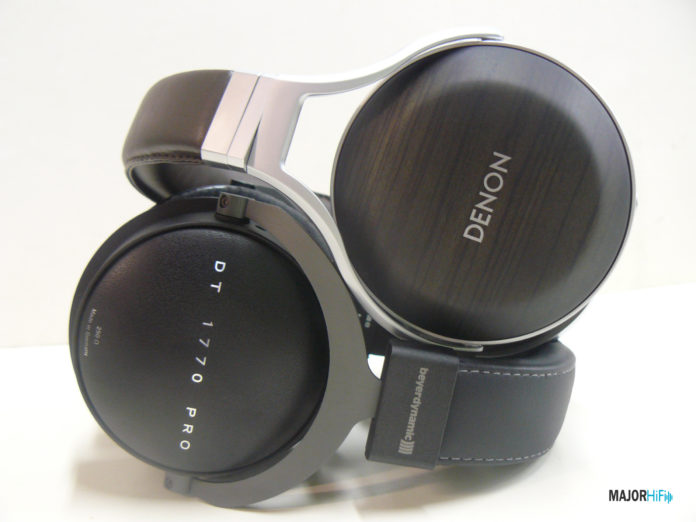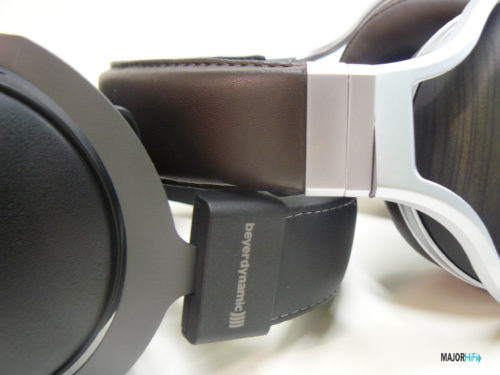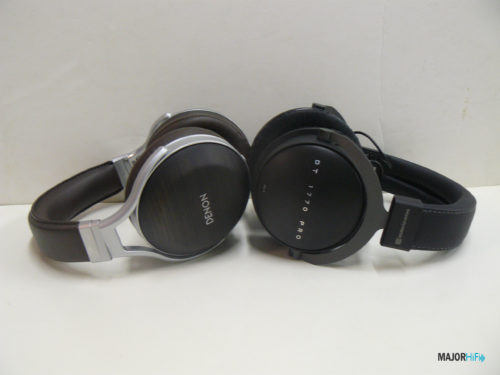For years there have been a handful of over-ear headphones that have been popular for studio production. Brands like Beyerdynamic, Shure, Audio Technica, and Sennheiser produce reference-level mixing headphones that are a must for any sound engineer. However, these aren’t the only manufacturers to look out for, as sometimes the outliers can deliver exactly the sound you need without you even knowing. Recently I got to listen to the Denon AH D5200, a wooden closed-back for $699, and I found it to be on the same level as these brands. As I was listening to the D5200, the sound signature started to remind me of the Beyerdynamic DT 1770 specifically, and it got me wondering how both would stack up next to each other. Let’s dive into each headphone and see which model might work the best for you.
What You Get
| Beyerdynamic DT 1770 Pro | Denon AH D5200 |
|
|
Look and Feel
When examining the build of both headphones, it becomes a pretty even contest. The construction of the D5200 and the DT 1770 are both exquisite, made from sturdy frames and durable components. Wooden headphones require more upkeep than what you see on the DT 1770, as the wrong environment can damage the cups over time. Aesthetically, the DT 1770 appears the most mechanical and can be hit or miss depending on who’s wearing them. I prefer the fit of the D5200 but both can be worn for long periods of time without issue.
Design
Outside of sound signature, one of the biggest differences between the two headphones is their drivers and resistance. The D5200 has a 50mm FreeEdge driver, while the DT 1770 uses a 45mm dynamic driver. With the DT 1770’s high 250 Ohm resistance an amplifier is pretty much necessary to power the headphones properly. With the D5200 an amp isn’t as crucial, with an impedance of only 24 ohms.
Soundstage
For closed-back studio headphones, you need to first and foremost have an accurate sense of placement in the stereo field. For both the DT 1770 and the D5200, it’s not about an ultra-wide and holographic stage, the key is articulation and transparency. Both headphones do a fine job of communicating their sound, but they do take different paths. For instance, the imaging on the 1770 feels more weighty when compared to the D5200, with certain elements appearing bigger, and with a more heightened response. The D5200 is a lot more natural and spacious, providing a stronger sense of separation between elements. This makes it easier to highlight certain areas in the mix without seeming exaggerated. While the DT 1770 might contain more depth than the D5200’s more surface-level soundstage, they both have the ability to deliver a similar sense of ultra-clear imaging and balance.
Low End
There’s a considerable amount of bass extension in the DT 1770 compared to the D5200. Sub-bass frequencies are a lot more prevalent and add distinct vibrating tones that help engage the listener more with the mix. While the D5200 doesn’t quite have the same detail, there’s a certain amount of depth here that grants the bass a similar definition. It’s a tighter response that you honestly might need for your reference. The DT 1770 might give you the better lift, but the D5200 feels more even. Each has their place in a sound mix, especially when dealing with LFE effects that require the DT 1770’s type of timbre. However, the D5200 does better with tighter grooves and relaxed tones.
Mids
Both headphones have a full midrange response, giving you clear effects, instrumentals, and vocal detail. They both encompass a straightforward, flat timbre aiming to deliver uncompromised sound for a pure reference sound signature. This is the bread and butter of these headphones, as, without a balanced midrange, the accuracy of the timbre becomes harder to trust for a mix. There’s a bit of a tonal softness to the D5200, but it is still rich in its textures, with its superior separation helping elevate articulation.
Highs
Beyerdynamic has a tendency to go a bit hot in this treble, but the emphasis is still played in an even tonality. You’ll definitely catch sibilance here, which you may want to be pointed out when approaching a mix. With that being said, the D5200 is not as pronounced in its treble, instead of going for a more relaxed but detailed tone. You get more of a natural timbre here, which is going to work more in the favor of listeners who might prefer this type of signature.
Summary
You can’t go wrong with either pick, but it’s worth knowing where some studio headphones differ. Depending on what you working with, you may prefer a more natural response which the D5200 will give you, but if you’re looking to work with heavy bass effects, then the Dt 1770 will be the more reliable choice.
The Beyerdynamic DT 1770 and Denon AH D5200 are available at Audio46.
Compare the ranking of various headphones, earbuds and in-ear monitors using our tools.
Discuss this, and much more, over on our forum.
---MAJORHIFI may receive commissions from retail offers.

















